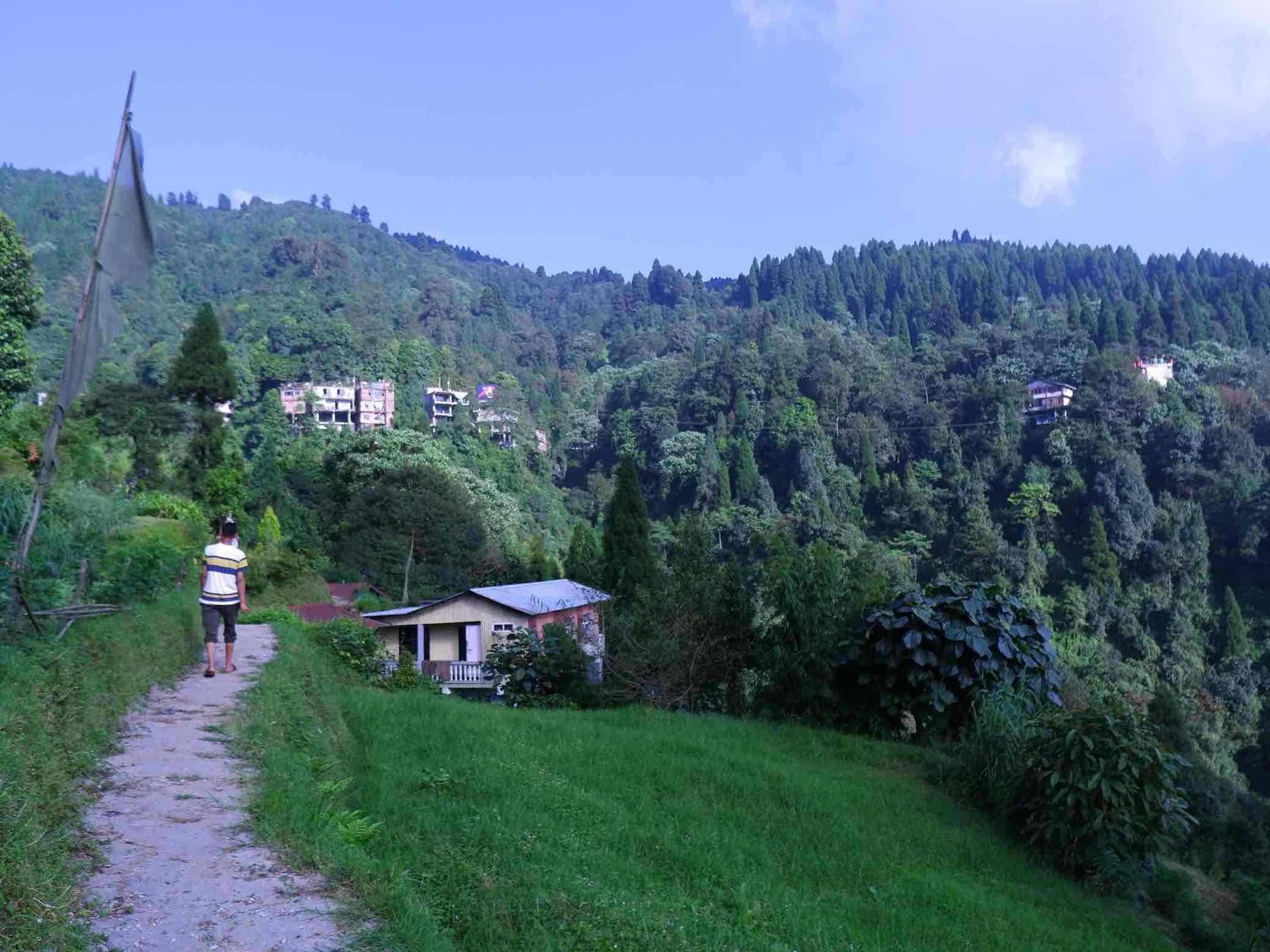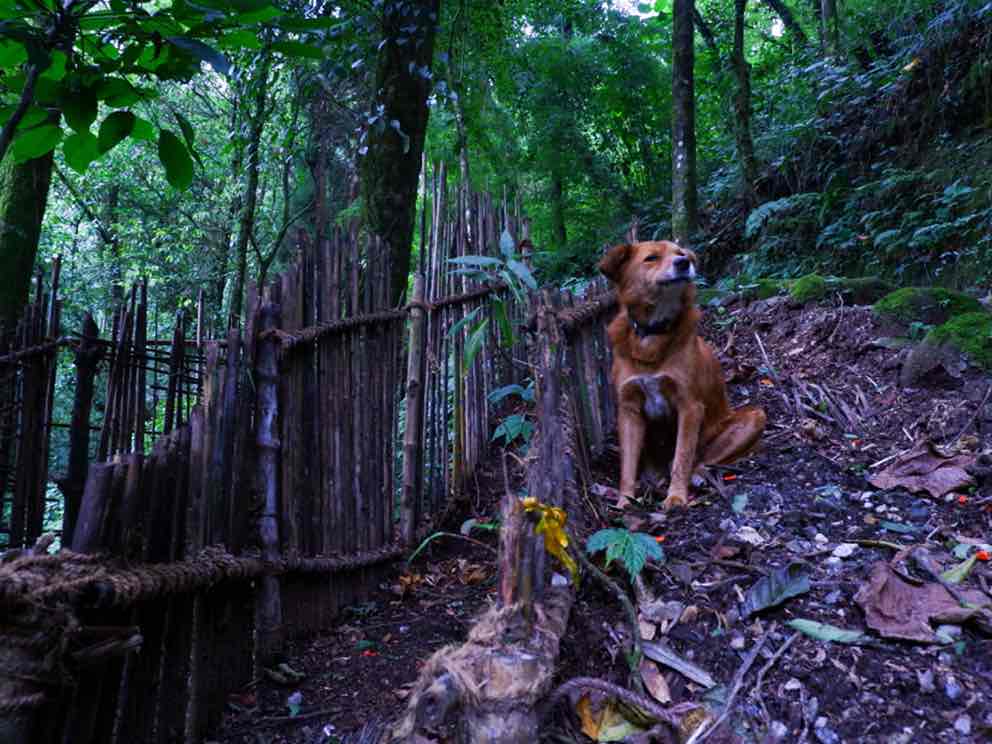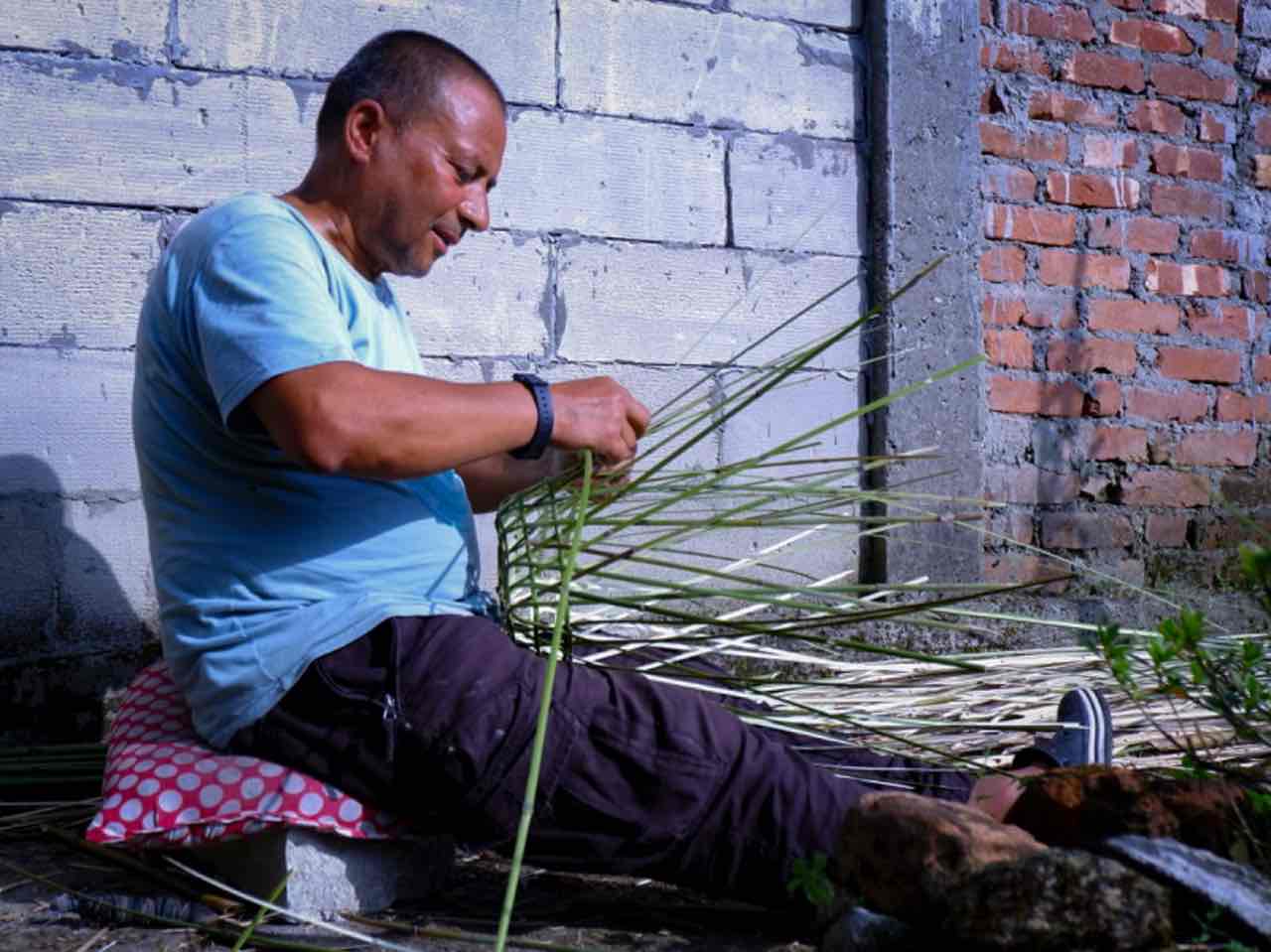As you drive up to Darjeeling from the nearest railway station or airport in Siliguri, West Bengal, you are greeted by verdant slopes adorned with tea shrubs, a rainbow of flowers, and deciduous trees. Forests run along both sides of the National Highway, which takes a steep climb after crossing the village of Rohini. Japanese cedar trees (Cryptomeria japonica), locally called dhuppi, enhance the scenery as the climate adorns itself in cooler shades.
Tiny hamlets made up of concrete and wooden houses echo with smiles, laughter, and joy that resonate with the sounds of nature. Numerous streams cut through the Himalayan foothills, gently gurgling around each curve, while the chirping of birds adds to the melody.
However, as picture-perfect as this may sound, an ominous plague threatens the environment and, consequently, the livelihoods of many. The symptoms are evident in the occasional plastic packets, cigarette butts, bottles, and other forms of non-biodegradable waste that dull the vibrant colours of the landscape.

Utsow Pradhan, 43, left his job at an edtech company in 2015 to return to his ancestral property, where he would witness this plague and eventually start work towards finding a cure. The land that once hosted a brick factory had, by 2016, turned into a dump yard.
“When I first came here, the place was a big dump yard. Even the municipality staff came and dumped garbage here. It wasn’t very visible at first because of the trees surrounding the area,” Utsow recalls. “There was also thick undergrowth of plants. We didn’t really know the extent of the problem back then,” he adds.
At a time when development had almost become synonymous with concrete structures, Utsow decided to take a different route. Drawing on tradition and his knowledge of permaculture, he founded ‘Tieedi’ — an acronym for ‘Take It Easy, Easy Does It’.
Mission Green Mile: A step towards sustainability
“Initially, the goal was very personal; I wanted to explore natural buildings on my own and grow my own food. But when we started clearing the undergrowth, we began to experience firsthand the problem of plastic pollution,” Utsow informs me as we sit in one of his mud houses, sipping fresh Darjeeling tea.
The compound has since transformed into an eco-resort with its own waste segregation and composting facilities. It features a few cottages built from mud and bamboo, where guests often visit to contribute to the various initiatives Tieedi has undertaken.
Utsow, who spent his formative years in Kurseong — a tiny municipality about 40 km away from Darjeeling — says that the transformation he witnessed over the years pushed him further to explore ways in which sustainability and development could coexist.
“Earlier, I remember about five concrete shops when I first visited the compound in Gorabari. There were over fifty now along that one-kilometre stretch of road,” Utsow says.

Utsow began by picking and segregating plastic waste from the site. The task, however, was not easy and continues to this day. “We started picking up plastic from underneath the soil. It’s been eight years, and we’re still picking up plastic…even though we’ve removed close to about 15,000 sacks of plastic from here,” he shares.
This experience left a lasting impact on Utsow, and soon he extended his zero-waste initiatives to three neighbouring villages. “After we went zero waste, which was just a few months into operations, the dumping of plastic waste gradually stopped,” he says.
As I walk down a once-nameless village bordering Tieedi, I am greeted by an enthusiastic man weaving a bamboo basket outside his house. The village has come to be known as Naya Basti (translates to ‘new village’) and is located near Gorabari, bordering Sonada.
“What Utsow bhai is doing is truly amazing,” Badal Chettri, 61, tells me. Weaving baskets is something he does to pass the time since his retirement, and his products find their way into neighbouring shops.
“You won’t find any plastic here,” Badal says with pride, adding, “There might be a little plastic near a construction site on top. But we’ve asked the workers to gather all of it in one place; we’ll collect and send it to the waste facility soon.”

Naya Basti is part of the one-kilometre stretch Utsow mentioned. Houses are connected by steep roads carved into steps, and the air is filled with a fresh sense of serenity. Surrounding it are lush green forests and a small waterfall leading into a stream that, just a few years ago, was suffocating under large debris of plastic.
At every corner of the village, tin jars serve as dustbins. Riwash Tamang, who helps collect the waste and send it to the segregation facility, recalls a recent visit from a group of children from a nearby school. It has been three years since he first joined work. “The children came with their teachers,” he tells me, unable to recall the school’s name, “They were thrilled to see the cleanliness of our village. It is a good thing. We now know how to deal with all of our household waste.”

The nearby village of Rajahatta, which also falls along the same one-kilometre stretch of road, has a similar story. As you reach the stairs that climb up a forested path, a signboard introducing the area as a zero-waste village greets you.
As the process of becoming zero-waste is ongoing, Utsow has made waste collection from the region a daily task under a project named the Green Mile Project.
While the task might’ve been herculean, Ustow and his team were provided the necessary support by DCB Bank. “DCB Bank has been our CSR partner in the Green Mile Project for the last three years. They played an instrumental role in funding the project and helping us launch the three zero waste villages of Darjeeling,” Utsow acknowledges.
Meet the waste warriors
With the help of his team, Utsow has built an impressive waste treatment facility that segregates waste into 53 categories before treating or recycling it.
As I walk down the steps to reach the building, Snehal Sinalkar, who oversees the project as team lead, introduces me to their waste warriors — a group of chickens, two rabbits expecting new friends soon, and two guinea pigs.
Pointing at the composting pit, Snehal says, “This has the capacity to process 100 kg of waste. So, we dump the waste here, and the chickens do their work.”

“Animal integration is a major part of permaculture. The chickens eat a lot of the biodegradable material, and then they poop. That works as a catalyst in processing the biodegradable material,” she explains. “They also have another important role — aeration. This is crucial for maintaining moisture and oxygen levels in the compost,” she adds. Aeration involves creating air pockets that allow enough oxygen to convert organic matter into compost.
The entire collection and composting process is done manually. The sloping terrain is utilised, allowing waste to be placed at a facility uphill from where it gently rolls down to the composting area.
Reviving a stream
“We’ve planted about 600 trees in the area,” Utsow says when I ask him about the tiny river flowing through the compound. “We’ve also cut the hills into steps to allow water to recharge the soil,” he adds.
This river, like several others flowing in the Shivaliks, is most active during the monsoon season. It is mostly rain-fed and often acts as a tributary to glacier-fed rivers like the Teesta and Ganga.
This particular stream has become perennial, Snehal informs me, explaining that the abundant groundwater provides a constant flow. Members of the Tieedi team have also placed nets along the stream’s borders to prevent people from dumping garbage. An interesting technique they employ is setting up a small temple at a part of the stream.
“Treating it as an auspicious site prevents locals from dumping garbage here,” Snehal explains. A tiny bamboo bridge connects both sides of the complex, and the river’s constant flow adds melody to the voices of the many birds inhabiting the area.

The numerous indigenous plants, including fruits and vegetables, are all grown organically. Mulching pits, neatly divided along the steps, assist in this process.
In Naya Basti, Badal tells me that Tieedi’s initiative has helped them better understand waste management, and they are now imparting this knowledge to the younger generations. He is also pleased that it is generating employment opportunities for the people. “We offer immersive experiences for travellers. We host events like Banbhaat, which is an art, music, and poetry festival steeped in local culture. We also organise the Darjeeling Eco-Trail run, which goes through the surrounding villages,” Utsow informs me.
“Here, local delicacies like selroti and aloodum are featured, and the locals themselves are part of the whole programme, which helps us curate it in a very authentic way. We also promote bamboo weaving,” he adds.
Tieedi’s intervention, Utsow says, is also helping revive the bamboo industry, which people are gradually forgetting. Bamboo plays an important role in the buildings constructed within Tieedi as well. As I prepare to leave, I’m greeted by Riwash, whose words I will carry home:
“Nature is important; it is absolute. We must learn to live in harmony with it.”
Edited by Pranita Bhat
No comments:
Post a Comment